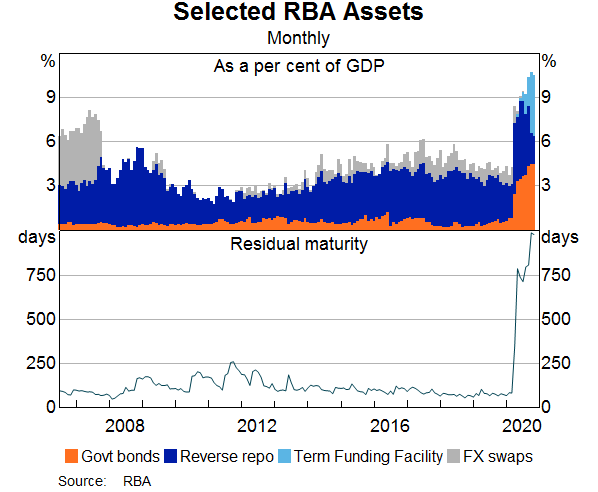Via Ross Gittins today:
But I’ve heard from a lot of retired central bankers who disapprove of the Reserve’s scraping of the barrel. And last week Dr Mike Keating, a former top econocrat, also questioned the wisdom of keeping on keeping on.
Some other people have seen the Reserve’s decision to, in Lowe’s words, “do what we reasonably can, with the tools that we have, to support the recovery” as a sign it judged last month’s budget not to have done enough.
…As Treasury Secretary Dr Steven Kennedy made clear last week, monetary policy’s “scope . . . to provide sufficient stimulus is limited and has necessitated the large levels of fiscal support”.
…the fact remains that the Reserve’s primary function – the short-term stabilisation of demand – has gone away and isn’t likely to come back in my lifetime (another 20 years, max). That is, its problem is structural (long-lasting) not cyclical (temporary).
Wrong, Rossco. The RBA has plenty more ammo and is getting more, not less relevant. The cash rate has ceased to matter but with mortgage rates still at 3% and fixed at 2% there’s oodles of room to get them down to Europe’s 0.5%. That will be achieved via the Term Funding Facility (TFF).
Consider, the TFF lends to banks at just 0.1%. At the moment it does so for only 3% of their liabilities. Yet Aussie banks have 40% of liabilities that are private-sector bonds that can be refinanced for free at the RBA. That’s plenty of falling funding costs to drive mortgage rate cuts.
For example, in Europe, the ECB now pays banks 100bps to lend money without any limits:
So long as we have a government that wants to see higher house prices then that will prevent captured regulators like APRA or reform from preventing it.
This is the absurdity of Government MPs like ‘Tiny Tim’ Wilson complaining about gutted savers. It is his own government that is doing it by running an overly tight fiscal policy that gives the RBA no choice.
Which hints at where we go next. Once the RBA uses up all of its TFF capacity, over years, and that results in even higher household debt, the banks will all along be dying of falling margins. This begins to weigh on lending and prevents any kind of economic rebound sufficient to generate inflation.
At a certain point, this absurdity then comes back to the RBA again. As governments realise they are the only borrower left with any creditworthiness, we reach the point of MMT in which it borrows and spends like mad directly from the central bank to lift economic activity. That’s when we might finally see rising interest rates rebooting conventional central bank tools.
Note that nowhere in this process does the central bank run out of ammo.
Only its role changes.


